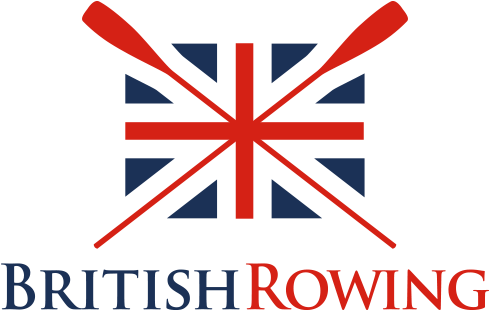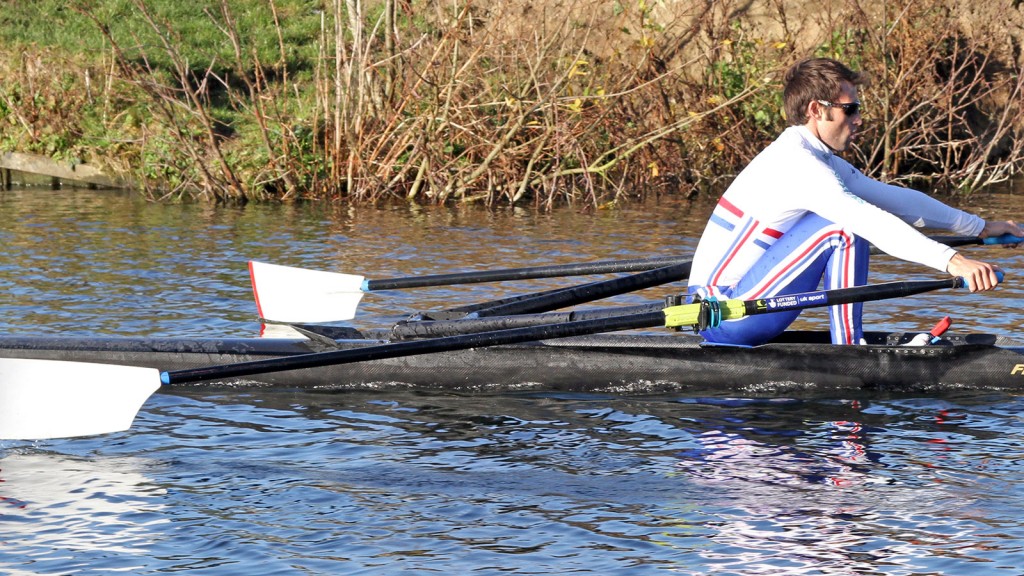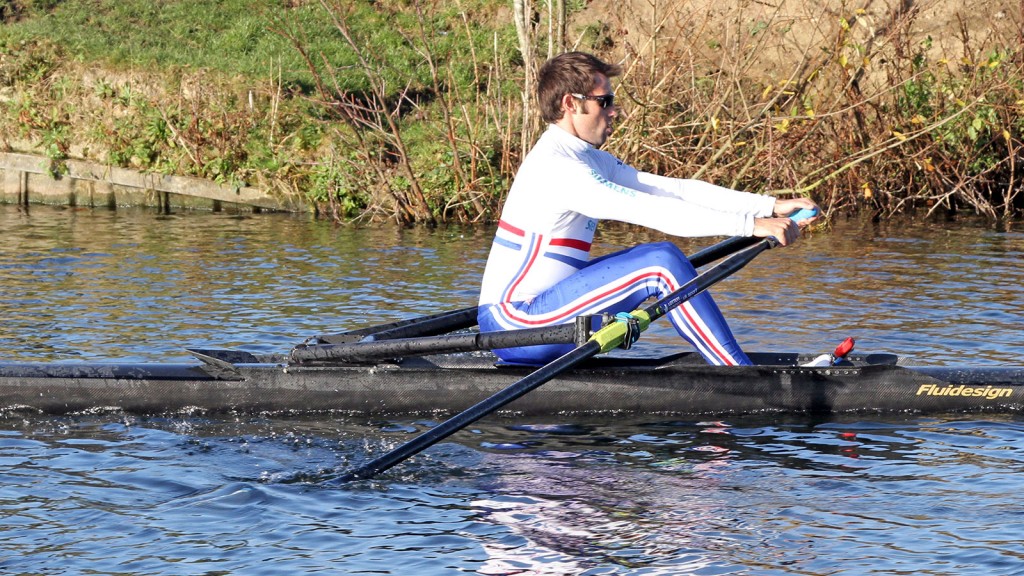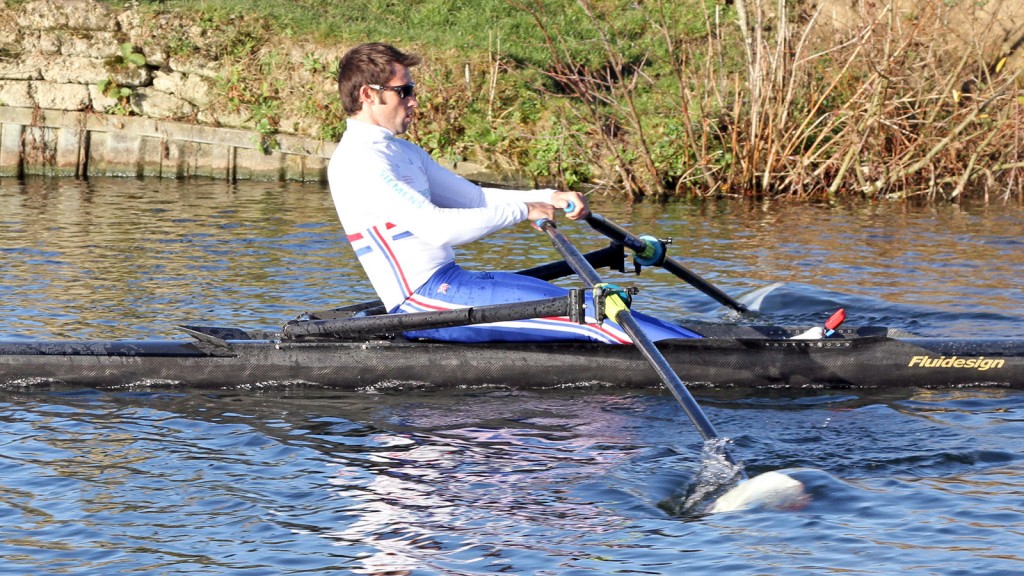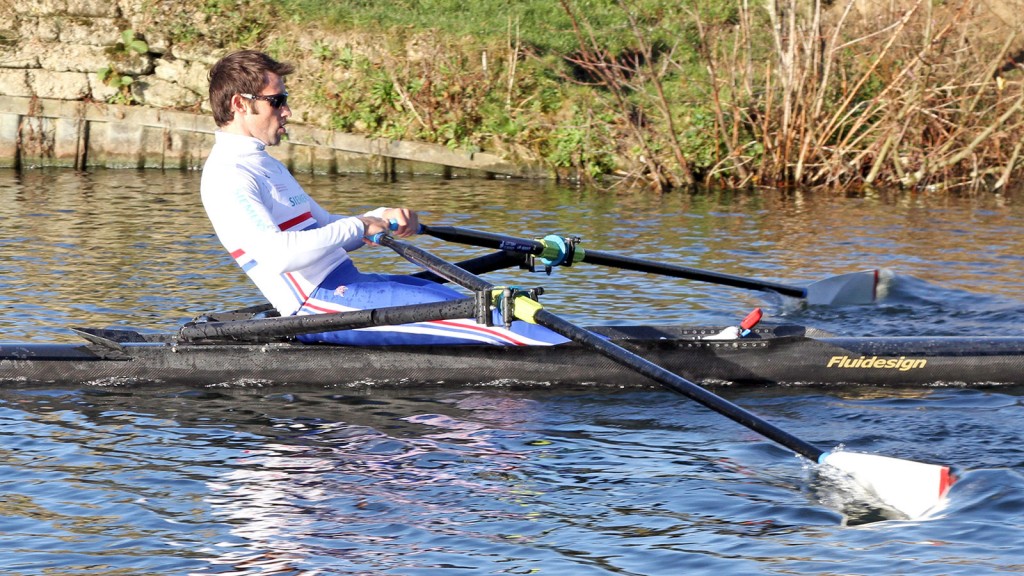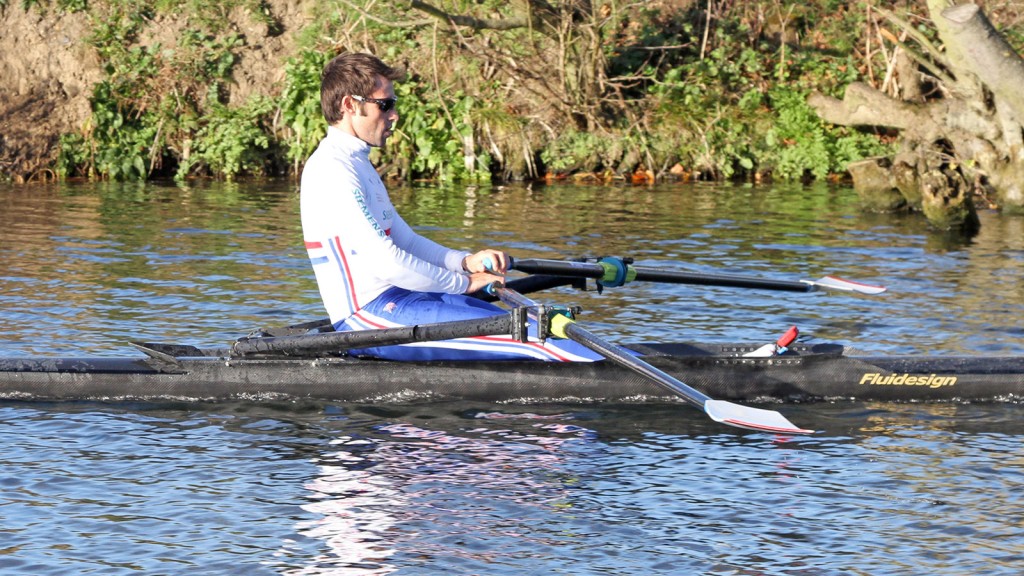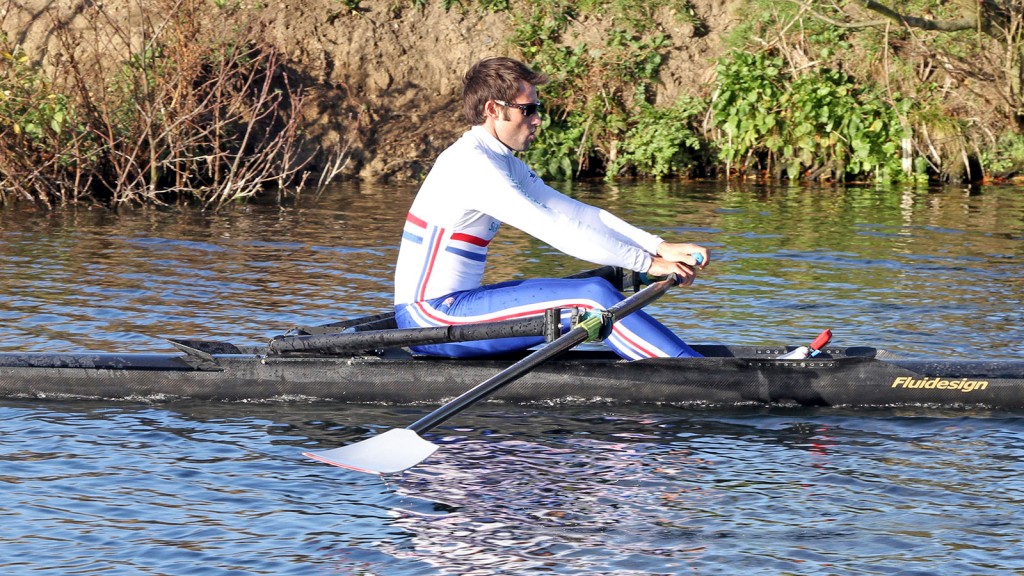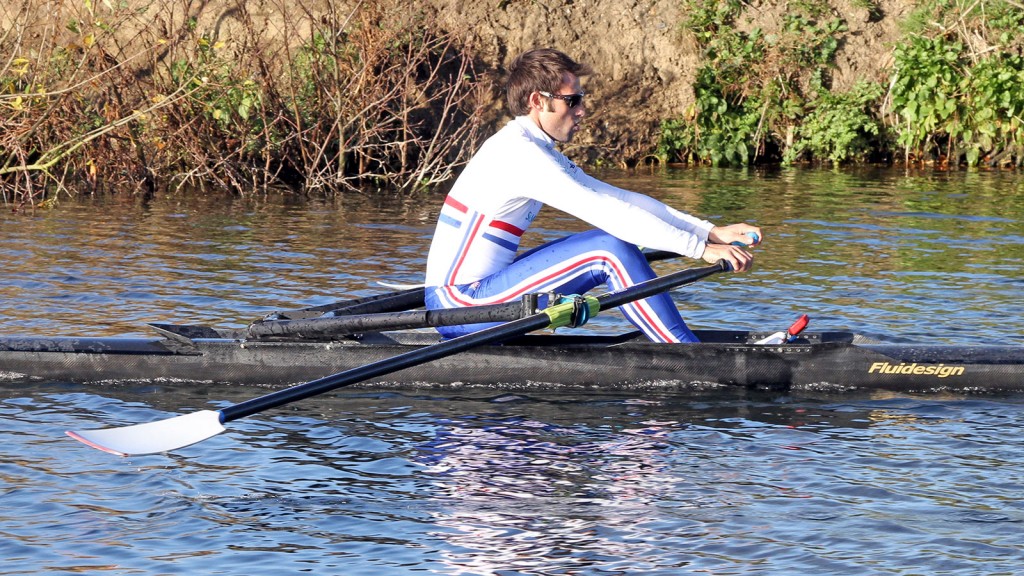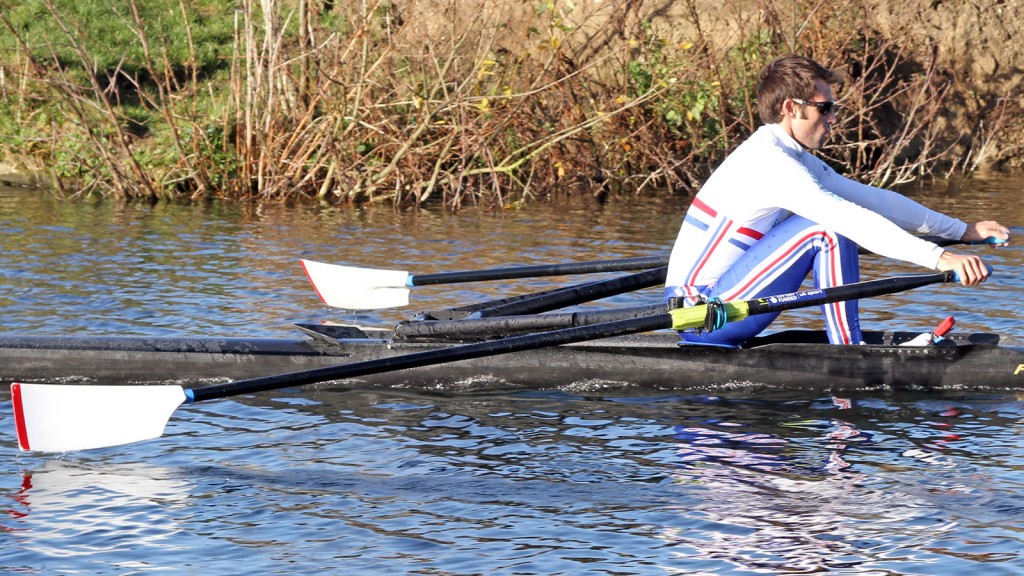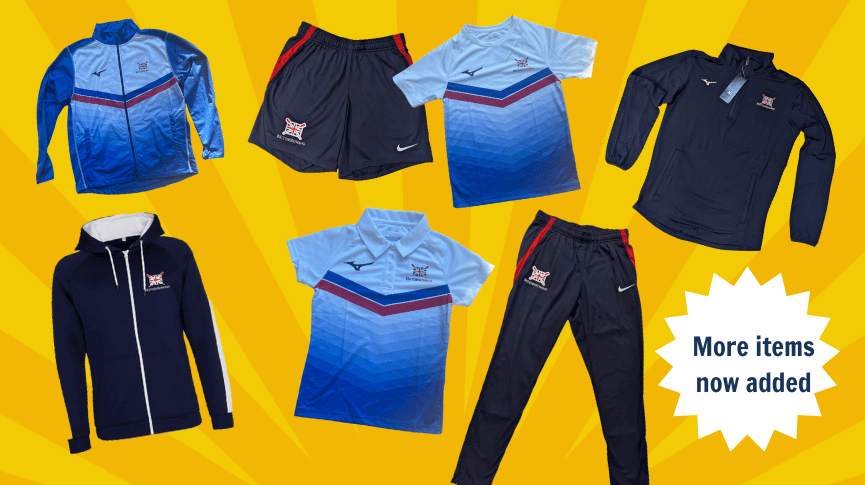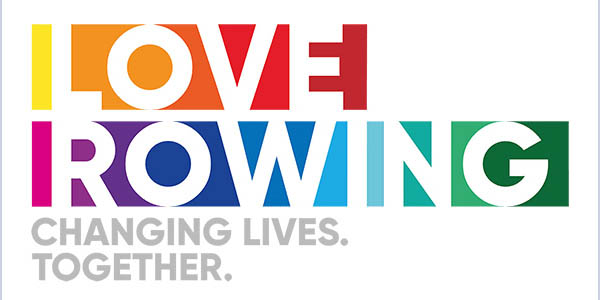British Rowing Technique
Technique is a key aspect of a rower’s development, alongside physical and psychological development
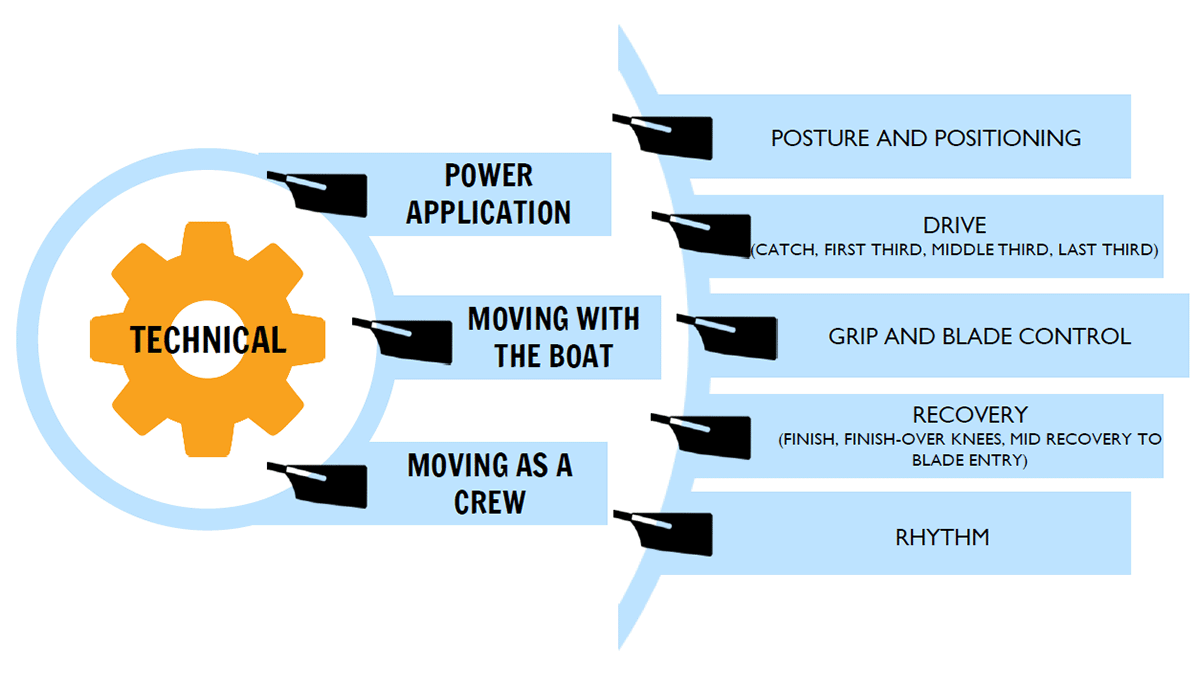
The British Rowing Technical Model, shown above, is based on the principle of maximising Distance Per Stroke (DPS) at racing rates.
DPS means the distance the boat travels each stroke. DPS is achieved through effective Power Application, propelling the boat effectively during the Drive, by using appropriate length, strong body positions, and sequenced application of power from the legs, trunk and arms. Then, DPS is optimised by Moving with the Boat and Moving as a Crew to achieve the best possible distance between the strokes during the Recovery, using smooth and well sequenced movements of arms, trunk, and legs, and minimising any disturbance to the run of the boat.
The three principles of Power Application, Moving with the Boat and Moving as a Crew are all underpinned by five key elements of every stroke:
- Posture and positioning: Strong posture through a full range of movement, which ensures the rower can achieve the correct positions, and co-ordinate and control those positions to apply power effectively.
- Drive: A leg driven, well connected and sequenced drive, which utilises the rower’s full potential power to accelerate the boat the maximum distance per stroke.
- Grip and blade control: Relaxed grip, which enables the rower to have complete control of the blade throughout the stroke cycle.
- Recovery: A relaxed, poised and well organised sequenced recovery, which enables the boat to travel its maximum distance between the strokes and enables the rower to be well set for the next stroke.
- Rhythm: A strong rhythm between drive and recovery, which is consistent from paddling all the way up to race pace.
If you’re a British Rowing member, you can watch more detailed videos about the three elements of the British Rowing Technical Model (Power Application, Moving with the Boat, and Moving as a Crew) in RowHow.
Watch the rowing technique videos
These British Rowing Plus articles by Robin Williams explain details of each part of the stroke.
The following sequence of photos illustrate effective power application for classic rowing.
Drive Phase
Recovery Phase
Here are some detailed explanations of what to do at each of these points in the stroke, plus some common errors.
Drive Phase
| How to achieve this | Common errors | |
|---|---|---|
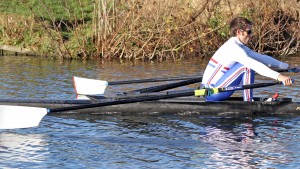 | This is the start of the drive phase of the stroke, when the blades are placed in the water (called the ‘catch’) and the boat is driven forwards using the large muscle groups in the legs and body. The shins are vertical, the back straight and leaning forward and the body closed up on the thighs. All that is needed is for the hands to lift upwards a little more, and the blades will be fully ‘locked’ in the water. | The seat begins to move backwards faster than shoulders. This fault is known as ‘bum shoving’ and it causes the powerful leg drive to be weakened considerably. |
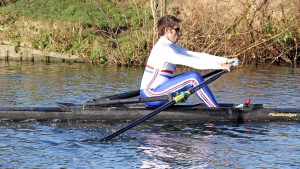 | It is a mistake to think that rowing is pulling with the arms, but many beginners do this. The legs should be doing most of the work here, with the arms relaxed and the back still straight and leaning forward. The hands should be parallel to the boat. The feeling should be that of hanging off the blade handles. | Arms pulling over the knees into an arc causing the blades to plunge too deep. |
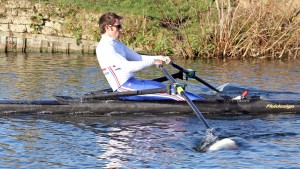 | Nearing the end of the drive phase the body swings back and the arms are used to maintain the momentum of the blade handles. | The blade handle is pulled down (instead of along) causing the blade to lift from the water before the end of the stroke. This is called “washing out”. |
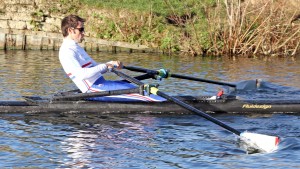 | The hands make a small tap downwards, to lift the blades clear of the water. The legs are flat down. The back is straight, but leaning slightly back so that the abdominal muscles feel a slight pull. The blade handles just brush the body when the spoon end is flat on the water. This is the end of the drive phase and the recovery phase begins. | The rower sits too upright and the elbows droop down – the effect is to shorten the stroke. The rower leans too far back – which delays the recovery. |
- How to achieve this:

- This is the start of the drive phase of the stroke, when the blades are placed in the water (called the ‘catch’) and the boat is driven forwards using the large muscle groups in the legs and body. The shins are vertical, the back straight and leaning forward and the body closed up on the thighs. All that is needed is for the hands to lift upwards a little more, and the blades will be fully ‘locked’ in the water.
- Common errors:
- The seat begins to move backwards faster than shoulders. This fault is known as ‘bum shoving’ and it causes the powerful leg drive to be weakened considerably.
- How to achieve this:

- It is a mistake to think that rowing is pulling with the arms, but many beginners do this. The legs should be doing most of the work here, with the arms relaxed and the back still straight and leaning forward. The hands should be parallel to the boat. The feeling should be that of hanging off the blade handles.
- Common errors:
- Arms pulling over the knees into an arc causing the blades to plunge too deep.
- How to achieve this:

- Nearing the end of the drive phase the body swings back and the arms are used to maintain the momentum of the blade handles.
- Common errors:
- The blade handle is pulled down (instead of along) causing the blade to lift from the water before the end of the stroke. This is called “washing out”.
- How to achieve this:

- The hands make a small tap downwards, to lift the blades clear of the water. The legs are flat down. The back is straight, but leaning slightly back so that the abdominal muscles feel a slight pull. The blade handles just brush the body when the spoon end is flat on the water. This is the end of the drive phase and the recovery phase begins.
- Common errors:
- The rower sits too upright and the elbows droop down – the effect is to shorten the stroke. The rower leans too far back – which delays the recovery.
Recovery Phase
| How to achieve this | Common errors | |
|---|---|---|
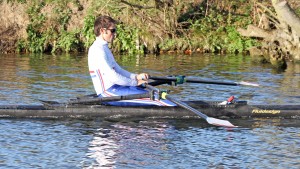 | At the beginning of the recovery phase, the hands move down and away. The arms move away from the body, which is balanced vertically, but the seat has not yet begun to move and the knees are still held down. The arms, shoulders and neck are relaxed. This posture aids recovery from the exertion of the stroke, and helps to keep the boat balanced in the water. The body then rocks over from the pelvis, with the back straight, and the knees lift, allowing the seat to move. | The knees lift and get in the way of the hands, which should be moving parallel to the boat. |
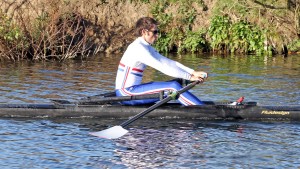 | The hands are higher or lower than the point shown. The body is not leaning forward at the angle shown. The rower does not slow momentum before taking the catch. | |
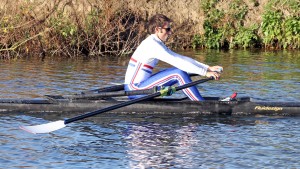 | The body is upright and the arms are not held out long enough. | |
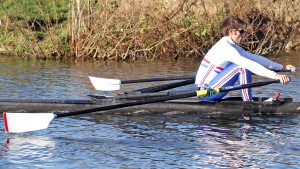 | The body at this point is in the catch position, moving forward until the shins are vertical and the sequence begins again. | The rower does not reach forward to get a long stroke. The body collapses over the knees. The shins are not vertical. |
- How to achieve this:

- At the beginning of the recovery phase, the hands move down and away. The arms move away from the body, which is balanced vertically, but the seat has not yet begun to move and the knees are still held down. The arms, shoulders and neck are relaxed. This posture aids recovery from the exertion of the stroke, and helps to keep the boat balanced in the water.
The body then rocks over from the pelvis, with the back straight, and the knees lift, allowing the seat to move. - Common errors:
- The knees lift and get in the way of the hands, which should be moving parallel to the boat.
- How to achieve this:

- --
- Common errors:
- The hands are higher or lower than the point shown. The body is not leaning forward at the angle shown. The rower does not slow momentum before taking the catch.
- How to achieve this:

- --
- Common errors:
- The body is upright and the arms are not held out long enough.
- How to achieve this:

- The body at this point is in the catch position, moving forward until the shins are vertical and the sequence begins again.
- Common errors:
- The rower does not reach forward to get a long stroke. The body collapses over the knees. The shins are not vertical.

